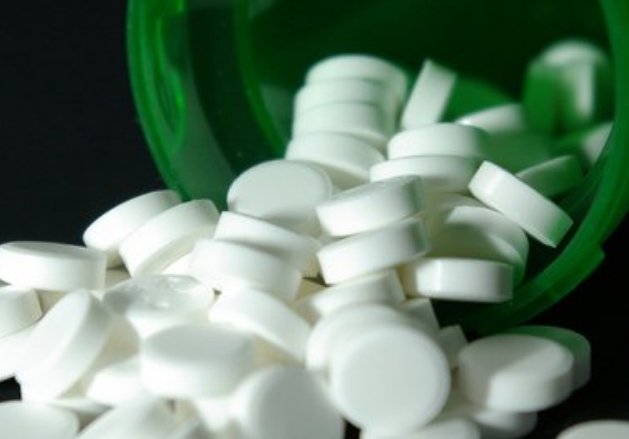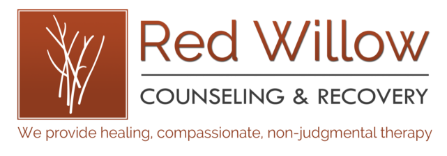
There are definitely identifiable Mormon stereotypes: family-oriented, clean-cut, hard-working types. Members in good standing forgo sex outside of marriage, the consuming of alcohol and tobacco, and the drinking of coffee and non-herbal teas. But within the Mormon Corridor, the area in the United States in which Mormons are the most concentrated, a serious drug addiction problem has taken root.
The initial source of the addiction is not the local liquor store, gas station, or even coffee shop. Nor is it some dark, off-the-grid location chosen by a shady drug dealer. No, the initial source of the addiction is very often the well-lit rooms of medical clinics and the counters of pharmacists. For children, it is often their parents’ medicine cabinets.
The dealers? Doctors or other medical professionals trying to alleviate pain. The culprit? Opioid painkillers.
And it is a big problem in the Book of Mormon Belt.
So much so in Utah that community health leaders recently initiated public awareness campaigns. They hosted prescription drug drop-off events for medicines no longer needed for their initial purposes. And, last Wednesday, Utah received a 5-year, two-million-dollar grant from the federal government to try and remediate the swell of opiate addictions, overdoses, and related deaths in the state.
The grant was given on International Overdose Awareness Day, August 31st.
So why is Utah experiencing real vulnerability in the current prescription opioid epidemic in the United States? Why are predominately-Mormon communities seemingly more susceptible to prescription drug addiction than they are to other addictions? I have some ideas.
1. Altitude and Opiate Addiction
The state logo is quite apt: “Life Elevated.” The text, stamped across images of Utah’s iconic rock formations, says a lot with two words.
ut, because of Utah’s unique geography, the air is thinner. It is the price we pay for living so high up. There is less oxygen per square meter of air here than at locations closer to sea level.
High altitudes have been linked to an increase in mental illness and behavioral disorder distribution in the populations that live there. Higher suicide rates are evident as well. The fact is, the brain requires oxygen to effectively produce and exchange vital neurochemicals like serotonin. The oxygen level of the high-altitude air in Utah is less than optimal for these processes. And this, unfortunately, has lent itself to an uptick in depression rates and other mental illness distributions across the state. Of course, other factors most likely contribute to this as well, but altitude is a significant one.
And mental health professionals know all too well that mental illness is a frequent co-conspirator of substance abuse. Obviously, not everyone with a mental health condition uses substances illicitly or abuses legal ones. But among those dependent on substances, a co-occurring behavioral or mental disorder is present more often than it is not.
While causal links are generally difficult to prove, and establishing correlation can, itself, be a tricky business, experts tend to agree that the link between substance abuse and mental illness goes beyond mere antidote. Self-medicating is a real occurrence. Whether it is alcohol, marijuana, or some other substance, people with mental illnesses will sometimes turn to substances to try to escape their symptoms. In Utah, where the high altitudes may increase the frequency of mental disorder, they may consequently be putting residents at greater risk for substance abuse.
So why is opioid dependence, in particular, a thing to which our communities may be more vulnerable?
2. Legal and Religious Status of Opiate Drugs
It is no secret that The Church of Jesus Christ of Latter-day Saints, otherwise known as the LDS or Mormon Church, has powerful influence in the state of Utah. This fact is frequently pointed to as a possible explanation whenever Utah scores low on alcohol, tobacco, or other drug use in national surveys.
The Mormon scriptural code for health, known by its members as the Word of Wisdom, disallows the consuming of alcohol, tobacco, coffee and non-herbal teas. Furthermore, obeying the “laws of the land” is an emphasized teaching, making illegal drugs obviously against Church statutes as well. But the status of opiate drugs being prescription painkillers not against legal or religious code may make abuse easier to rationalize—even for the most devout Mormon church-goers.
The reality, however, is that opioid abuse is against the law and basic Mormon teachings. According to top Church leaders, all addiction is to be avoided as it is autonomy-destroying. These leaders have even explicitly condemned the abuse of prescription drugs. And a case against opioid dependence can be made from a careful reading of the Word of Wisdom, which states that members should use plants “with prudence.” (Opiates were traditionally derived from the poppy plant, and opioid painkiller addiction flies in the face of prudence.)
3. Discreteness of Opioid Dependence

If you live in Utah (again, a predominantly Mormon community that shuns alcohol and tobacco use, not to mention tea and coffee), chances are that things might get kind of awkward if people see you with beer or cigarettes.
People who drink or smoke often take steps to avoid landing on the receiving end of righteous admonition from concerned Mormon neighbors, family, and friends. No person wants their personal choices to have a socially negative impact on their lives or the lives of their children.
These fears may add to the allure of prescription opioid painkillers. Who suspects a paper Rx-bag and small orange pill bottle contain the source of a deadly addiction? Going to the doctor and to the pharmacy are thought of as healthy and responsible activities turning the bag and bottle into symbols of health and responsibility.
But opioid addiction is irresponsible and dangerous.
It’s an addiction that is so easy to rationalize and disguise, that some individuals might not even recognize its development within themselves, even though they’re the ones taking the medications. This is why it is so important for people to be adequately informed when their doctors prescribe such drugs. And it is a wise decision to have a family member or friend informed as well. This loved one might be able to recognize the early signs of addiction in yourself better than you can. In fact, having several people “in the know” is an excellent precaution.
4. Frequency of seeking medical care

When the numbers came out a few years ago showing Utah’s apparent high rate of antidepressant use, a BYU professor offered a possible explanation. Professor Daniel K. Judd related how Mormons are, statistically speaking, more likely than the general population to have attended college. He suggested this bump in education just might explain why more Utahns are on antidepressants because the more education an individual has, the more likely he or she is to seek professional medical treatment when symptoms arise.
I don’t know whether or not his explanation adequately explains Utah’s increased antidepressant usage, but there is something I want to borrow from this line of thinking: the possibility that Church members may seek medical treatment more often than non-members.
The Church of Jesus Christ of Latter-day Saints provides a support network, encourages a social climate, runs an educational system, and preaches with a certain health-focus that when combined leads members to seek medical care at an increased rate. Paradoxically, this might be able to explain, in a small way, why Utah communities have proven vulnerable to the opioid crisis sweeping the country.
The more likely one is to seek treatment for pain symptoms, the more likely one is to be prescribed painkillers. The more often this occurs, the more likely one is to eventually be prescribed an opioid.
If Mormon individuals really do seek medical treatment with higher vigilance at the arrival of symptoms, this might slightly up the risk for substance abuse opportunities. It is just an idea, but it does not seem completely unreasonable and may merit further academic research.
But Where Do We Go From Here? What Can We Do About This Serious Problem?
1. Explore other options for pain relief.
Patients should ask their doctors if there are other clinically valid options for pain relief instead of a prescribed opioid painkiller.
2. Inform loved ones.
If opioid use seems like the best option, a patient may benefit from having a close friend or family member be informed about his or her treatment.
3. Discard unneeded prescription drugs.
When the medicine is no longer needed for its intended purpose, it is essential for the patient to follow the instructions of his or her doctor and properly discard the medication.
4. Take extra precautions as physicians.
Doctors, for their part, should seek to thoroughly educate their patients regarding the risks of using opioid painkillers and the dangers of opioid addiction. They can also exercise careful judgment when prescribing such drugs, taking into account the past mental histories of their patients. A patient with a history of mental illness or addiction may be at a heightened risk for dependence.
5. Become educated and spread information as community leaders.
Government and church leaders can educate themselves further as well, and seek to inform people. The state of Utah and the Mormon Church has already taken a stand against prescription drug abuse, but perhaps they can do so with renewed focus, highlighting their support to the addicted population.
If you are addicted to prescription drugs, whether opiates or something else, get the support you need. Seek the help of a mental health professional and a primary care doctor. If people close to you are struggling with opioid drug abuse, let them know you support them in their fight against addiction.
Getting off any drug you have grown dependent on has certain risks, and this is definitely true with opioid painkillers. Seek the professional medical help you need in order to get through this stage of recovery, which can be dangerous and disorienting when undertaken alone.
The path won’t be easy, but it will be worth it.
Red Willow Counseling and Recovery offers opioid addiction recovery services





